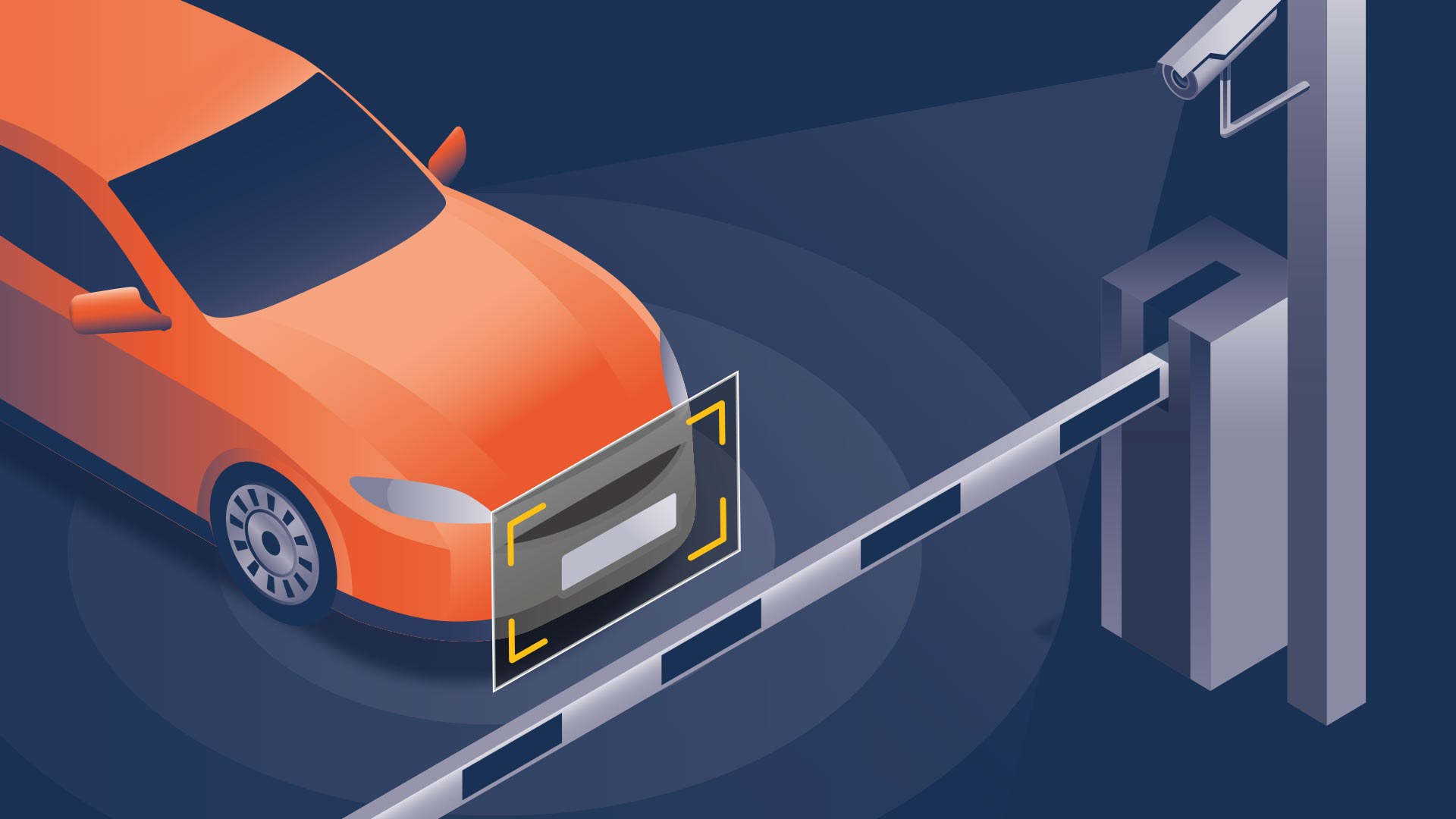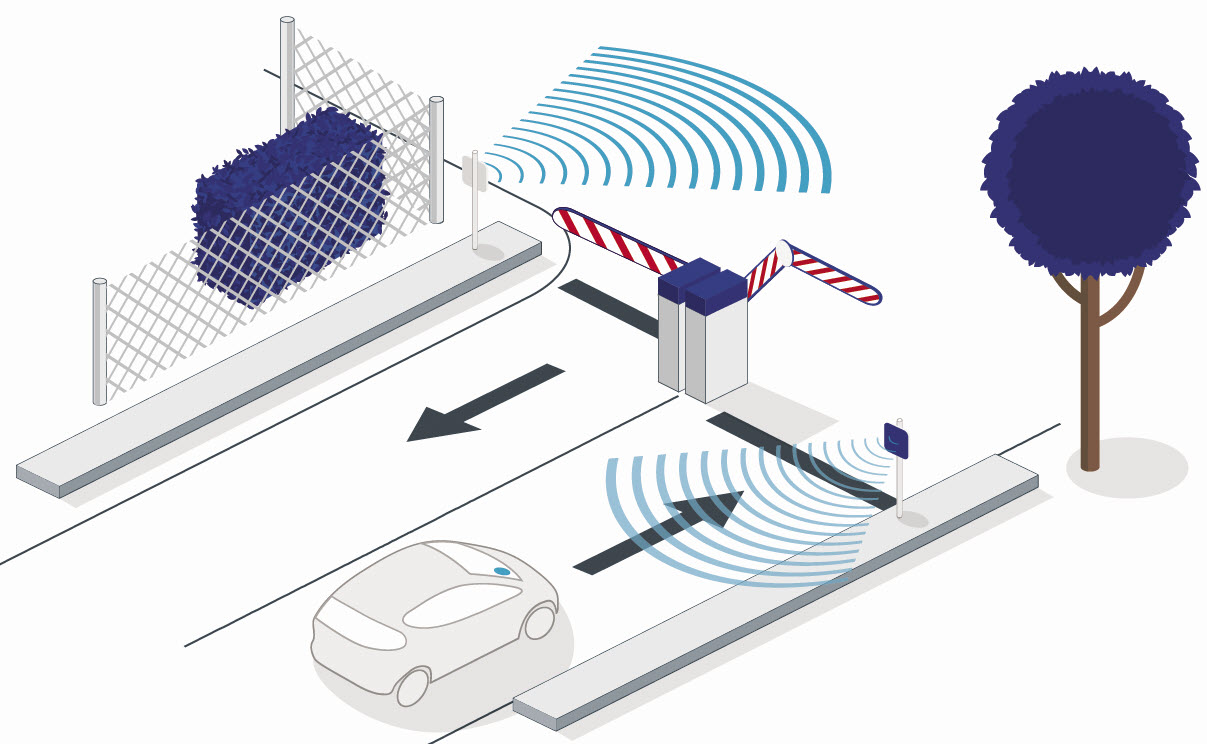
6 Differences Between Long Range RFID and ANPR Technology
Over the course of modern society, technology has been the sector that has lead the progress forward. Without modern tech on our side and all the benefits its brings to the table, there would not be life as we now know it. Many areas of everyday life have been improved thanks to such advancements, as well as those more significant and meaningful for the community as a whole. One thing that everyone agrees should be at the top is security, and when we say security we mean in every sense of the word. It is a universal term but it hardly matters since all types of security allow people and property to be better protected and safer. This is why there can never be enough security technology and why it constantly needs to evolve.
Security technology has come a long way, but it continues to evolve as we seek new and better ways to keep ourselves safe and our assets secure. Technology in this field is evolving through a range of gradual improvements and introducing a variety of options for consumers in the process. For example, with vehicle security systems, parking lots and toll stations, there are now a range of handy automatic vehicle identification solutions that have made things easier both for the drivers and for the authorities that are supposed to keep everything in check.
Automatic Number Plate Recognition (ANPR) and Radio Frequency Identification (RFID) are the two most popular vehicle identification systems in use today. The best part is that RFID technology has been improved to allow long-range identification. They are so useful and they make so much sense that it can be difficult to think to the days where we still did not have them. These two solutions are amazing, but is one better than the other and are they even comparable in such a way? If so, what is the difference between the two? Read on to learn more and be sure to click here for more about both.
What is Long Range RFID?
RFID technology is based on object identification through electromagnetic fields. The hardware involved includes an RFID reader, a microchip, and an antenna. The detection range of RFID is directly proportional to the frequency. Usually, most RFID readers are compatible with 860 MHz ~ 980 MHz UHF and 2.45 GHz Microwave frequencies, more than enough to perform their role.
However, there are better options too. For example, UHF-based RFID readers have a longer range. Long Range RFID is already delivering great results in logistics, where it is being used to trace products in production and track parcels in distribution. Both of these applications make the job of people involved much easier because of the sheer scale of products that need producing and parcels that need tracking. Apart from this, RFID with enhanced range is ideal for monitoring traffic flow and efficiently managing access control.
Now that you are more familiar with long range RFID, one question remains to be answered. How does RFID compete with ANPR and what are the major areas where they differ? Let us take a look at the 6 major differences between Long Range RFID and ANPR technologies.
Accuracy

On average, the accuracy of ANPR is 96%. This sounds impressive, but the story can be different when you talk real world performance and application. If, for example, 50 million vehicles are scanned through ANPR systems on UK highways every year, even a 4% error margin represents 2 million errors. This is a significant amount of vehicles that may have been missed entirely or that have been miss scanned.
The integration of Cyclic Redundancy Checks (CRC) and air protocol in RFID technology aims to prevent data transmission errors like these and get the final number as close to 100% as possible. On the other hand, ANPR uses voting logic and programmed algorithms for reading characters on a number plate. RFID has the ability to self-check the data it reads and so its results are more accurate than ANPR. Both are very good at their roles, but RFID is simply more accurate right now.
Resources Required
ANPR is inexpensive for one major reason: the object it has to identify, which is the license plate of a vehicle, is already mandatory for every vehicle. Therefore, you do not need to install anything special in or on your vehicle for it to work. This is what has made ANPR the preferred choice for most toll stations and parking lots across the globe despite the less amount of accuracy.
However, trends are changing in many countries, and toll stations and parking lots are happy to have exclusive booths for tagged vehicles. ANPR is economical for its low supply cost and more easily applicable on a large scale. However, this will not stop the changing trends in favour of RFID, especially with its long-range features, and many agree that it is only a matter of time before it starts taking over despite the need for special tags.
Detection Rate

Since ANPR relies on visual recognition, the integration between optics (cameras), character recognition, and computing takes some time to read a license plate. In addition, shutter speeds and environmental conditions have an impact on ANPR reading speed. However, this should still work as long as the car is not moving faster than 100 miles an hour, or 160 km/h, and they are usually not moving that fast on average.
The UHF long Range RFID technology is efficient even with high-speed vehicles, which is why it is a preferred option whenever the vehicles are allowed or able to reach higher speeds. This means that if a car passes at over 100 miles an hour, the UHF RFID will still identify its credentials without any sort of issue.
Multi-Channel Processing
When it comes to multiple traffic lanes, ANPR requires a reader for each lane. This pushes up the cost of installation since you need more hardware for ANPR, as well as meaning more maintenance costs in the long run.
Since one RFID reader covers 2 traffic lanes, it can be more cost-effective. You just need to use two different antennas, each dedicated to its own lane. In simple terms, one RFID reader with 2 antennas is sufficient to identify vehicles coming from either direction, meaning half as much equipment and infrastructure.
Performance in Different Environmental Conditions

Dirt, snow, and dusty winds can negatively impact ANPR systems since they rely on optics for almost everything they do. Dirt and snow can sometimes partially hide the characters on the number plates, making ANPR ineffective. Sun glare reflected from a vehicle can also fall directly on the camera lens, making it highly difficult for the camera to capture a clear image. Even animals, birds, and insects can block the license plates. Red font colour on a license plate also gives ANPR a tough time.
On the other hand, RFID is immune to these environmental factors since it does not have anything to do with optics. It does still need light and clear visibility though to maximize the results. This is what makes RFID ideal during fog, wind, and snow. Furthermore, RFID equipment has a longer life expectancy compared to ANPR cameras and it makes more sense to have it installed right now.
Security
One issue with ANPR is that it lacks a built-in safety system that could enable it to differentiate between an original and a first-grade image of a license plate. This means fake license plates that have been made to look identical to official ones may pass as regular plates.
The RFID tags used for vehicle identification are secure since the system can embed a password for each tag. This means that nobody can access data in the RFID security system without having the correct password. Moreover, the encryption of the password makes the system even more secure.
Conclusion and Final Thoughts
Essentially, RFID has overcome most of the challenges faced by ANPR technology. RFID is more reliable, faster, and more accurate than ANPR. Despite a higher initial investment, it is cost-effective in the long run. Furthermore, with increased adoption of RFID, the supply cost will likely reduce in the future. The future looks bright for RFID as it will soon start replacing ANPR systems en mass, which is a good thing for the authorities and for the drivers since more security and safety is something we all benefit from.
